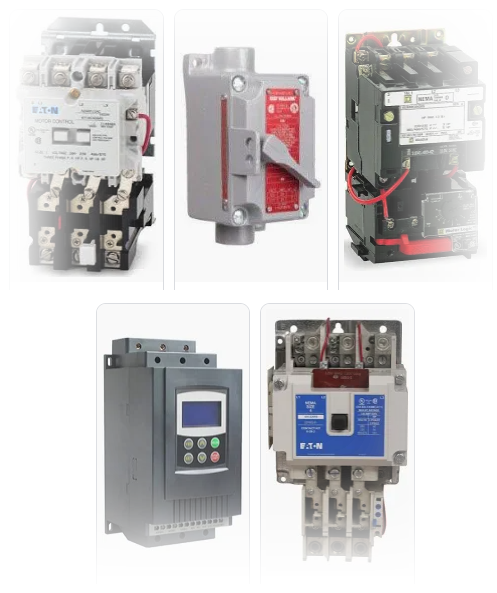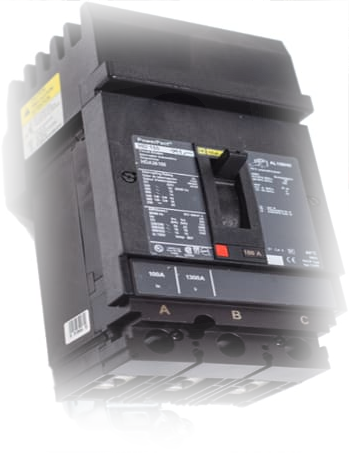Your electric motor starter is critical to the entire performance of your motorized devices. Over time, different variables might contribute to wear and tear, jeopardizing your operations’ efficiency and safety. In this post, we’ll go over the most important components of determining whether to replace an electric motor starter.
Need Electric Starters Products?
Get Your QuoteSell To Us
Got Electrical Equipment You Don't Need?

Reduce Your Electrical Inventories & Earn Cash
Sell My EquipmentPanelboard
Need a Panelboard for Your Project/Job?

Our Experienced Sales Engineers Can Help Design the Right Panelboard For You
Learn MoreTransformer Oil Testing
Is Your Transformer Due For Servicing?

Get Your Oil Analysis & Fluid Testing Done By Our NETA-Certified Techs
Learn MoreElectrical Product Resources
Product Training Product Safety Product Guides Product News Featured Products- 7 Signs It’s time to Replace an Electric Motor Starter
- Electric Motor Starter Assessment Checklist
- Identifying Symptoms of a Faulty Starter Motor
- Spotting Signs of a Bad Electric Motor
- Diagnosing Issues with Your Electric Motor Starter
- Making Electric Starter Connections
- Diagnostic Tools for Electric Motor Starter Maintenance
- Test Your Knowledge: Replacing a Faulty Motor Starter FAQ
Understanding the subtle signs is important when diagnosing the symptoms of a broken motor starter or recognizing signs of a damaged electric motor. We’ll look at the most common indications of a malfunctioning motor starter, as well as the anomalies that might develop during your motor starter inspecting. Plus, we’ll walk you through the process of diagnosing a defective electric motor starter, giving you the expertise to check the condition of your electrical motor equipment.
Whether you’re experiencing extended motor cranking, strange sounds at startup, or intermittent motor starting problems, this post will help you recognize if it’s time to replace your electric motor starter.
7 Signs It’s time to Replace an Electric Motor Starter
1. Prolonged Cranking:
If your motor takes longer than normal to start, this might be a sign that the electric motor starter is no longer working properly. Extended cranking times may show wear and tear on the starting mechanism, requiring starter replacement.
2. Unusual Sounds During Startup:
Strange noises, like grinding or clicking, during motor initiation are common signs of a failed electric motor starter. These sounds suggest technical faults with the starter, requiring a replacement to guarantee smooth motor functioning.
3. Intermittent Starting Issues:
If your motor starts abruptly or has intermittent starting troubles, it may be because to a malfunctioning electric motor starter. Irregularity in the starting procedure shows that the starter is either not engaging correctly or is having difficulty initiating the motor on a regular basis.
4. Frequent Motor Overheating:
A defective electric motor starter can lead to high motor temperatures. If you see the motor frequently overheating, it might be a sign that the starter is having trouble managing the power flow properly. Addressing this issue as soon as possible might help to protect the motor from further harm.

5. Burnt Smell or Smoke:
If you notice a burned smell or smoke near the electric motor starter, this is a major red signal. This might indicate electrical faults or internal damage to the starter. Immediate care and replacement are required to avoid safety risks and additional damage.
6. Visible Physical Damage:
Examine the electric motor starter for visible physical damage, like corrosion, rust, or loose connections. External damage can compromise the starter’s operation, reducing its capacity to appropriately regulate power flow. If any damage is visible, it’s time to replace the defective part.
7. Age and Wear:
Like any mechanical component, electric motor starters have a lifespan. If your starter has been in use for an extended period or is showing signs of wear and tear, it might be more cost-effective and safer to do preventative maintenance rather than waiting for a complete failure.

Electric Motor Starter Assessment Checklist
Listen for Unusual Sounds:
Task: Start your motor and listen for any grinding, clicking, or other unusual sounds.
Question: Are there any abnormal noises during the startup process?
Observe Startup Time:
Task: Note the time it takes for your motor to start after initiating the electric motor starter.
Question: Does the motor take longer than usual to start?
Inspect for External Damage:
Task: Visually inspect the electric motor starter for any signs of external damage, such as corrosion, rust, or loose connections.
Question: Is there visible damage on the exterior of the motor starter?
Check for Burnt Smell or Smoke:
Task: During startup, check for any burnt smell or smoke around the electric motor starter.
Question: Is there any noticeable odor or smoke?
Evaluate Motor Temperature:
Task: Monitor the motor’s temperature during operation.
Question: Does the motor exhibit frequent overheating?
Assess Starting Consistency:
Task: Start the motor multiple times and observe if there are any inconsistencies in the starting process.
Question: Does the motor start consistently, or are there intermittent issues?
Examine Electrical Connections:
Task: Inspect the electrical connections to ensure they are secure and free from damage.
Question: Are all electrical connections intact and properly secured?
Review Motor Starter Age:
Task: Determine the age of the electric motor starter since installation or last replacement.
Question: Has the motor starter been in use for an extended period?
Refer to Manufacturer’s Guidelines:
Task: Consult the manufacturer’s guidelines for recommended maintenance and replacement intervals.
Question: Are you following the recommended maintenance schedule?
Document and Compare Findings:
Task: Document your observations and compare them against the checklist.
Question: Based on your assessment, do you observe multiple symptoms or issues that suggest the need for electric motor starter replacement?
Identifying Symptoms of a Faulty Starter Motor
When evaluating the condition of your electric motor starter, it’s important to start by tuning in to audible cues. Start your motor and listen for any unusual sounds during the startup process, such as grinding or clicking noises. These sounds can be early indicators of issues within the electric motor starter. Also, pay attention to the time it takes for your motor to start after initiating the electric motor starter. If you find the motor is taking longer than usual, it could mean that the starter is not operating at it should.
Question for Self-Assessment: Have you actively listened for unusual sounds during startup and noticed the time it takes for your motor to initiate after using the electric motor starter?
Spotting Signs of a Bad Electric Motor
During your visual inspection, focus on any signs of external damage to the electric motor starter. Look for corrosion, rust, or loose connections on the exterior. This step provides good insights into the physical health of the starter. At the same time, during the startup process, look for any burnt smell or smoke around the electric motor starter. The presence of smokey odors or smoke can indicate electrical issues or internal damage, prompting the need for further investigation.
Question for Self-Assessment: Have you visually inspected the electric motor starter for external damage and paid attention to any unusual smells or smoke during startup?
Diagnosing Issues with Your Electric Motor Starter
Notice the operational aspects of the motor. Monitor the motor’s temperature during operation to assess whether it exhibits frequent overheating. Inconsistencies in the starting process are also worth evaluating. Start the motor multiple times and observe if there are any intermittent issues. A motor that starts inconsistently may signal underlying problems with the electric motor starter, demanding a closer look at its condition.
Question for Self-Assessment: Have you monitored the motor’s temperature and assessed the consistency of the starting process by initiating the motor multiple times?
Making Electric Starter Connections
Inspect the electrical connections, ensuring they’re secure and free from damage. Secure connections are vital for the proper functioning of the electric motor starter. Also, determine the age of the electric motor starter since installation or its last replacement. Age is a critical factor, as older starters may experience more wear and tear. To complement your assessment, refer to the manufacturer’s guidelines for recommended maintenance and replacement intervals. Adhering to these guidelines can offer valuable insights into the optimal lifespan of your electric motor starter and support decisions regarding its replacement.
Question for Self-Assessment: Have you thoroughly inspected the electrical connections for security and damage while considering the age of the electric motor starter in line with manufacturer recommendations?
Diagnostic Tools for Electric Motor Starter Maintenance
| Diagnostic Equipment | Diagnostic Equipment Purpose | Description |
| Multimeter | Measures voltage, current, and resistance. | Checking for proper electrical connections, identifying open or short circuits, and assessing continuity. |
| Clamp Meter | Measures current without physical contact. | Determining the current draw of the motor during startup and operation to ensure it falls within acceptable ranges. |
| Megohmmeter | Measures insulation resistance in motor windings. | Identifying potential insulation breakdowns or weaknesses that may lead to electrical faults. |
| Infrared Thermometer | Measures temperature variations in motor components. | Identifying overheating issues, loose connections, or imbalances that may affect the motor starter’s performance. |
| Phase Rotation Tester | Verifies correct phase sequence in three-phase systems. | Ensuring proper phase alignment to prevent motor damage and ensure optimal performance. |
| Circuit Continuity Tester | Checks if a circuit is complete or broken. | Verifying the continuity of electrical connections within the motor starter and identifying any breaks in the circuit. |
| Voltage Tester/Pen Tester | Detects the presence of voltage in a circuit. | Ensuring that power is properly reaching the motor starter and identifying potential issues with power supply. |
| Motor Rotation Tester | Determines the direction of motor rotation. | Verifying that the motor rotates in the intended direction, preventing issues with equipment connected to the motor. |
| Oscilloscope | Captures and analyzes electrical waveforms. | Observing the voltage and current waveforms to identify irregularities or abnormalities during motor startup. |
| Data Loggers | Records data over time for analysis. | Monitoring and recording variables such as temperature, current, and voltage during extended periods to identify patterns or trends. |
| Motor Analyzer | Conducts comprehensive motor testing. | Provides detailed insights into the motor’s health and performance, aiding in the diagnosis of potential issues. |
Test Your Knowledge: Replacing a Faulty Motor Starter FAQ
Symptoms of a faulty starter motor include prolonged cranking during startup and unusual sounds, such as grinding or clicking noises.
Signs of a bad electric motor may manifest as intermittent starting issues, frequent motor overheating, or the presence of a burnt smell or smoke around the motor starter.
Common symptoms of a faulty motor starter encompass prolonged cranking, unusual sounds during startup, and intermittent starting problems.
Diagnosing a bad electric motor starter involves observing key indicators such as prolonged cranking, unusual sounds, intermittent starting issues, and checking for visible physical damage like corrosion or loose connections.
The electric motor starter functions as the motor’s ignition key, managing power flow to ensure a safe and efficient start, preventing sudden starts, and protecting both the motor and associated gear.
Yes, visible physical damage, such as corrosion, rust, or loose connections, can be visual cues suggesting the need for electric motor starter replacement.
Yes, age and wear are crucial factors to consider. Electric motor starters, like any mechanical component, have a lifespan, and replacing them preventively after an extended period of use or signs of wear and tear can ensure continued reliability.
IMPORTANT: Electrical systems can be hazardous, and working with them without the necessary expertise and training can be dangerous. If you’re not a qualified electrician or don’t have experience diagnosing a bad starter, it’s highly recommended to get the assistance of a certified electrical professional. Performing electrical work without the needed knowledge and training may lead to severe injuries, electric shocks, or damage to the equipment. Always prioritize safety and, when in doubt, contact a qualified electrician about how to replace a bad electrical starter and related electrical maintenance.
